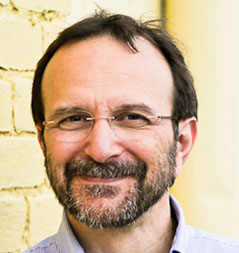From ASM Microbe in Houston, Texas, Vincent speaks with Eddie Holmes about the evidence that SARS-CoV-2 spilled over into humans in the Huanan Market in Wuhan, absence of evidence for other origins, and his work on the virosphere.
Vincent travels to the University of Pennsylvania to meet up with Susan, Rick, Gigi and David to discuss the origin of SARS-CoV-2, how the FBI might have reached its conclusion on the matter, and public and political perception of scientific risk.
Vincent travels to Montreux, Switzerland and the 16th International Nidovirus Symposium, where he speaks with Maria von Kerkhove, the face of COVID-19 for the World Health Organization, and Kanta Subbarao, Director of the WHO Collaborating Centre on Influenza in Melbourne.
TWiV discusses genetic evidence of susceptible wildlife in SARS-CoV-2 positive samples at the Huanan Wholesale Seafood Market, polio cases in African linked to a new polio vaccine that was designed to not cause the disease, and structural conservation of hepatitis B virus capsid proteins over millions of years despite a shift from a naked to an enveloped capsid.
Vincent travels to the NIH campus to speak with Jeffery Taubenberger about his career, the 1918 influenza pandemic, deciphering the genome sequence of the virus from tissues of disease victims and using it to rescue infectious virus.
In this special episode, Dr. Griffin answers questions about the recent cases of monkeypox including their origin, clinical presentation, diagnosis, treatment, and overall risk.
TWiV explains a study of how climate change is predicted to increase cross-species viral transmission risk, and increased memory B cell potency and breadth after a SARS-CoV-2 mRNA vaccine boost.
Elke, Adam, and Gabor join TWiV to discuss their work on Lloviu virus, a filovirus, including recovery of infectious virus from a DNA copy of the genome and from Schreiber’s bats in Hungary.
Michael Worobey joins TWiV to explain evidence that SARS-CoV-2 emerged via the wildlife trade and that the Huanan market was the unambiguous epicenter of the COVID-19 pandemic.
TWiV discusses the virome of game animals in China, and the finding that binding of sarbecoviruses to ACE2 is an ancestral and evolvable trait.








